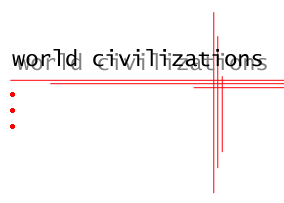SHIA CRESCENT
December 10, 2007 at 11:02 am | Posted in Globalization, History, Iran, Iraq, Islam, Middle East, Palestine | Leave a commentShi’ite Crescent
The “Shia Crescent”
Numbers show percentage of Shia population. Note that most Shias in Iraq actually live in the South, not the North of the country. The Shi’ite or Shi’a Crescent is a recent geo-political term used to describe a region of the Middle East where the majority population is Shi’a, or where there is a strong Shi’a minority in the population. It has been used to describe the potential for cooperation among these areas in Middle Eastern politics. The corresponding term is especially common in German, where it is known as Schiitischer Halbmond (“Shia halfmoon”). This term was used by Abdullah II , king of Jordan, after which it became popular in political debates.
The nations where Shi’a Muslims form a dominant majority are Azerbaijan, Iran, Bahrain, Yemen and Iraq, a plurality in Lebanon and large minorities in Turkey, Afghanistan, Pakistan, Kuwait, and Syria. The shape of these countries put together does in fact resemble a crescent moon or a half moon (see map).
Arab leaders watch in fear as Shia emancipation draws near
For the first time in centuries, Shias are about to come into their own as the rulers – or at least the politically dominant community – in a key Arab country.
In principle, the Iraqi elections will ratify and lend constitutional legitimacy to a transformation inexorably under way since the fall of Saddam Hussein.
In the Arab world, except for Lebanon with its largely Christian population, the rulers of all 22 states have traditionally hailed from the orthodox Sunni majority. But until now that has included two countries, Iraq and Bahrain, where, against the broader trend, Shias compose the majority.
The correction of this anomaly will be momentous, given Iraq’s history and geopolitical weight, and the tumultuous conditions in which it is taking place.
Ten or 15 per cent of the world’s 1.4bn Muslims are Shia. The differences with the majority Sunnis are doctrinal, cultural and often political, and date back to a schism over who would succeed the Prophet Muhammad 1,400 years ago. For much of that time Shias were a persecuted minority, creating a powerful culture of martyrdom. However, there have been several episodes when the Shia, despite their smaller numbers, have been more dominant – most recently in 1979 when the Iranian revolution and the regime of the Ayatollah Khomeini inspired hundreds of millions of Muslims of all denominations worldwide, promoting a re-energised political Islam. For a short period, all eyes turned to the Shia. In the intervening years their star waned. Now, it is shining bright again.
Five major elements underpin the new Shia revival. The first is the sudden militancy of Iran, which has been led aggressively onto the world stage by President Mahmoud Ahmadinejad. This new Iranian confidence is itself based on internal developments but also three main external factors: the removal of the Taliban from its eastern border in 2001; the removal of Saddam (a chauvinist Sunni) from its border; and vastly increased oil revenues.
Iraq, after all, is where, in the bloody struggle over the prophet’s succession, Islam’s great schism first took root; where, for centuries, Shias under Sunni Ottoman rule bore the brunt of its conflicts with Shia Persian empires; where, in the 1920s, Shias led the rebellion against British mandatory rule, but ended up grossly underrepresented in the modern Iraqi state; where, under Ba’athism, Sunnis turned minority rule into despotism of the most chauvinistic and brutal kind.
Literature:
Ferhad Ibrahim: Iran und die arabische Welt, in: Aus Politik und Zeitgeschichte, Nr. 9, Bonn 2004, S. 39-47.(German)
Vali Nasr: When the Shiites Rise in: Foreign Affairs July/August 2006, pp. 58- 74.
Asher Susser: Aufgang des schiitischen Halbmonds, in: Internationale Politik, Nr. 9, 61. Jahr, (2006), pp.68-.74 (German)








